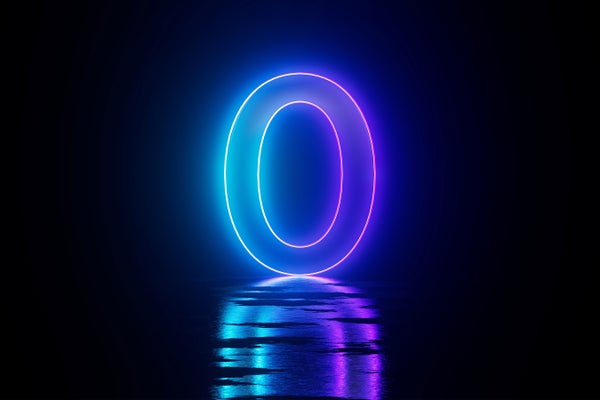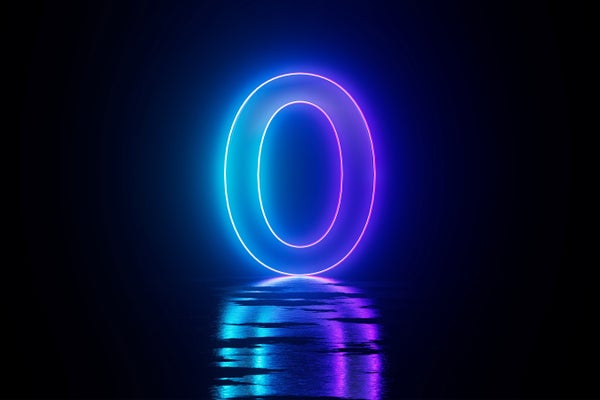October 21, 2024
3 min read
How Your Brain Processes Zero (It’s Not Exactly ‘Nothing’)
What we think about when we think about “zilch” is surprisingly complex, neuroscientists find

The invention of zero made many mathematical calculations possible.
Many mathematical equations can only be solved thanks to a special human invention: the number zero. In many ways, it is a strange concept. It’s a quantity, defined by absence. It also emerged relatively recently in our species’ cultural histories, gives rise to several paradoxes—one cannot divide by zero, for example—and is foundational to mathematics.
Yet “null” is not easy to comprehend. “It requires an extra level of abstract thinking to master zero…. We have to ‘create something out of nothing,’” says Benjy Barnett, a cognitive neuroscientist at University College London.
Zero’s latest surprise may be in just how well the brain learns to handle that abstraction. Now studies show that the concept of zero is processed in similar ways to many numbers and can be situated along a mental number line.
On supporting science journalism
If you’re enjoying this article, consider supporting our award-winning journalism by subscribing. By purchasing a subscription you are helping to ensure the future of impactful stories about the discoveries and ideas shaping our world today.
In a recent investigation by co-senior authors Andreas Nieder of the University of Tübingen and Florian Mormann from University Hospital Bonn in Germany, researchers demonstrated that the brain processes “zero” in at least two distinct places: one for the number and another for the empty set it represents. The team made its discoveries during an experiment with 17 people with epilepsy. All participants had microelectrodes inserted into their temporal lobes in preparation for an operation. The hair-thin sensors made it possible to observe how individual neurons reacted while the test subjects concentrated on a task.
During the experiment, each participant viewed a small screen that displayed different sets of numbers from zero to nine, represented on one side as a cloud of dots—where “zero” was an empty cloud—and on the other side as Arabic numerals. By monitoring test subjects’ brain activity, the researchers saw neurons that reacted specifically to the empty set and others to the number zero.
That finding is, in itself, not so surprising, says Ben Harvey, a cognitive neuroscientist at Utrecht University in the Netherlands, who did not participate in this research. The empty set, he points out, “is a quantity of physical objects…, [whereas] symbolic numbers, including zero, are linguistic signifiers, a component of language rather than physical objects.”
In addition, this same basic pattern—of activating different neurons for, say, the numeral 3 as opposed to three dots—applies to other numbers studied to date. But the distinction between an empty set and numeral may be especially important when considering zero. “When you look closely based on behavioral data or neuronal data, zero is still slightly different; it is still special,” Nieder says. “It is this eccentric uncle in the family of the numbers.”
For example, he and his colleagues found that the empty set takes more time for people to process than the symbolic numeral 0. Given those findings, Mormann says, “without these numerals, these symbolic representations, it would be much more difficult to create any theory related to mathematics.”
Zero can be conceptualized at several levels, including as an “absence,” a special category of emptiness, a quantity or as a number used in calculations. Although many animals have a number sense, Nieder, who has studied crows and monkeys, suspects that only humans use zero mathematically.
Furthermore, numeric zero, as used in mathematics, is something that humans need to learn about from others—it’s not an innate concept. Children generally cannot understand it until about age six. That’s roughly two years later than other numbers.
The notion that zero is somehow distinct comes from studies of brain injury as well. About 14 percent of people who have had a stroke may be unable to read or process numbers that include a zero digit, points out Barnett. In August he and Stephen Fleming, a fellow cognitive neuroscientist at University College London, published findings that showed the brain situates zero along a mental number line, regardless of whether a person is considering zero as a numeral or empty set. Nieder and Mormann’s team demonstrated the same—albeit with different methods and an emphasis on different brain areas.
“Overall these two studies are nicely complementary and go a long way to provide a better understanding of how zero is represented in the human brain,” Fleming says.
This article originally appeared in Spektrum der Wissenschaft and was reproduced with permission.

